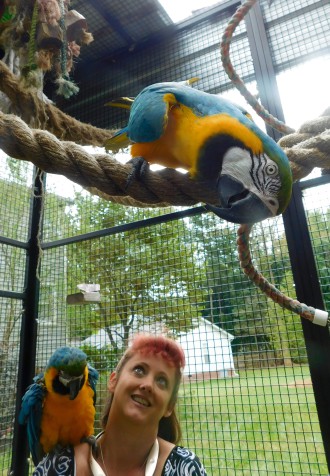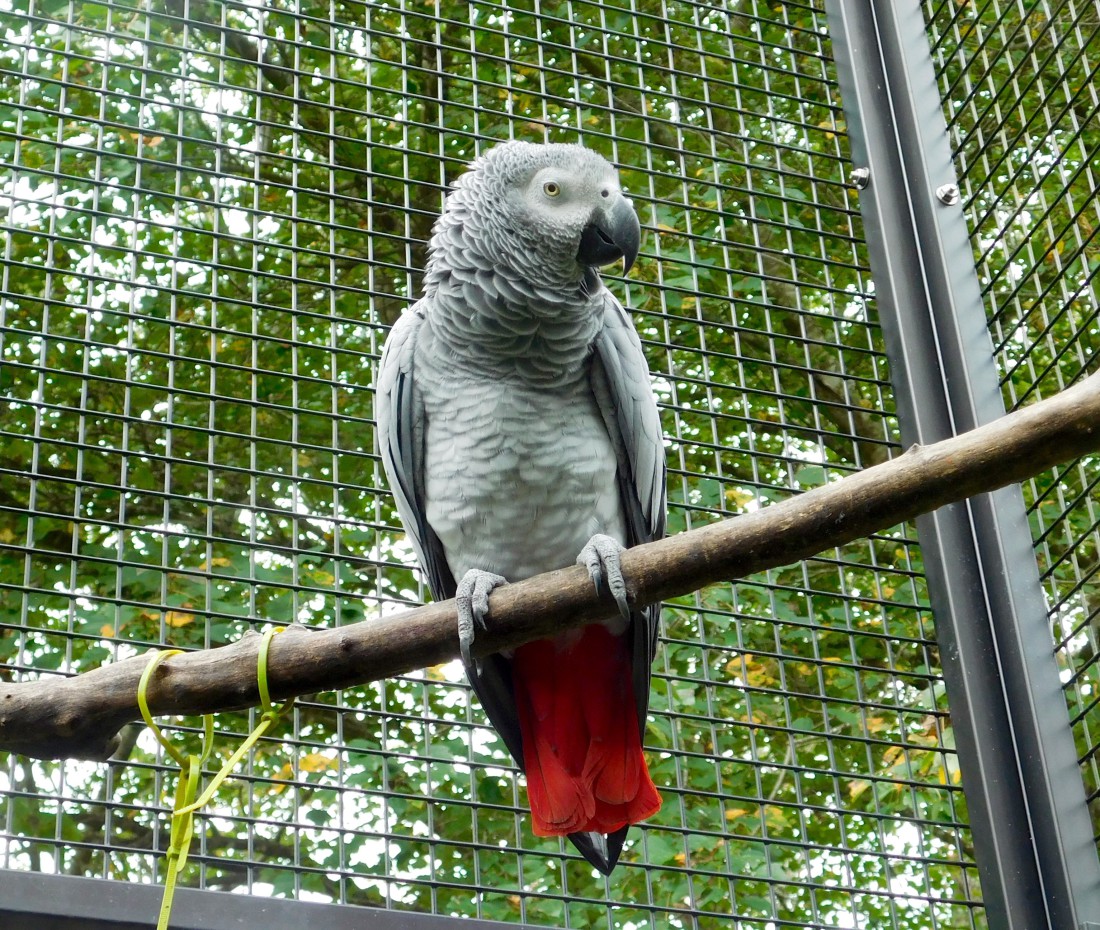ASHEVILLE, N.C.— You can hear it before you can see it.
Nestled in the hilly suburban community outside Fletcher, Heather Snipes’ house practically screams at you. Well, not the house really, but its inhabitants.
Inside the modest home, you’ll find Snipes, her husband, Brian, three dogs and their six birds — seven if you include Moe, the parrot she is training for a client. Even before you get to the door, you can hear the birds talking. Squawks ring out of the aviary in the Snipes’ backyard into the mountains beyond.

Snipes, known to her clients as the “Parrot Whisperer,” owns A Parrot’s Tale, a bird therapy and bird training practice that she operates from her home. Snipes says her mission is to help bird owners understand there’s more to taking care of a bird than putting it in a cage and feeding it birdseed.
“Most people get parrots and think they’re going to be ornamental,” Snipes says. “But birds are very smart and they need stimulation; they need challenges. They need to be out of their cages at least four hours a day.”
Finding her flock
Snipes developed a soft spot for birds as a little girl when her father took her to Parrot Jungle in Miami. “The trainers would put them on your shoulders so your parents could take pictures,” she says. “Then they would have the parrots in a show — they would fly over the audience and drop gifts, or ride a bicycle, or do other tricks. … I fell in love with them at that moment.”
It would be years before Snipes had a parrot of her own. In college she got an African grey — a large gray bird with white around its eyes and red tail feathers. She named her Xaxa and enjoyed her company for 13 years.
After college and a career as an emergency room nurse, Snipes moved to the Asheville area to be closer to her grandparents and parents. But through it all, she retained her love of birds, and she trained herself to work with them.
“I started reading books and attended classes whenever I could. I watched YouTube training videos and went to weekendlong workshops at Phoenix Landing,” Snipes says, referring to an Asheville nonprofit dedicated to the welfare of parrots. “For 25 years, I’ve been doing whatever I could to learn about birds, bird behavior and training.”
Ruffled feathers
For the past year, Snipes has been using the knowledge she gained to help clients with their birds. Kathleen Crocker brought her parrot, Moe, to Snipes in hopes she could help with the bird’s aggressive behavior.
“A friend of mine asked me to watch Moe years ago while he went hunting,” Crocker says. “He was supposed to be gone a week. He didn’t come back to get him for a year.”
From there, Moe went from one bad house to another, until Crocker finally found him again. It wasn’t exactly a happy reunion. Moe was aggressive and hostile, especially toward Crocker’s husband. “He was nipping and biting. … I didn’t know if Moe was displaying anger or joy,” she says.
Now, Moe is in “boot camp” at Snipes’ home, where she is teaching him to control his bad behavior and answer to commands. Snipes has trained the other birds in her house to not only listen to commands, but to do tricks like play basketball or fly from one outstretched arm to the next.
One of Snipes’ African greys, Piper, helped her to realize some of the reasons people have problems with birds. “It took me three months of training with her three times a day to get her to step up (onto my arm),” Snipes says. “I realized then that not only had her previous owner not taught her to step up, but they hadn’t been working with her at all. … That kind of neglect is a huge problem.”
Where the wild things are
According to the American Veterinary Medical Foundation, an estimated 6,150 pet birds reside in Asheville-area homes. Information from Phoenix Landing shows that larger parrots can live for several decades, sometimes going through several homes throughout their lives.
Dwelling in domestication can be a challenge for the birds. “We ask our birds to live as our pets in a cage instead of flocking, foraging and flying free,” says Ann Brooks, co-founder of Phoenix Landing. “In turn, they ask and need us to assume a lifestyle that provides them with lots of space, a social life, quality nutrition and enrichment. It is a daunting challenge for both companions — the human and the parrot.”
Bird owners can expect times of stress and difficulty, just as in any other relationship. “[The] most common reason people relinquish their birds is not enough time and attention, followed by job, children, illness, moving, money, death and lastly, behavior,” Brooks says. “It’s not about abuse or neglect — it’s about longevity of the birds and the need for people to learn how to live successfully with a smart, busy, prey animal.”
Part of the shifting dynamic between birds and their owners is that birds change as they age, Snipes says. “A lot of pet owners buy a bird from a pet store [when the bird is] an infant,” she says. “At first, they are pliable and eager to please. Then they hit puberty at about 5 years old, and you’ve got a whole different bird on your hands. A lot of people will give them up rather than learn how to train them and work through the problems.”
But for Snipes, the benefits of parrot ownership far outweigh the challenges. “I told Brian these are our babies,” she said. “Each one has its own personality and its own little quirks. Rafiki hates to fly … Piper calls for Brian by saying ‘Daddy.’ Each one is different like a child would be. … They’re just wonderful additions to our family.”




Before you comment
The comments section is here to provide a platform for civil dialogue on the issues we face together as a local community. Xpress is committed to offering this platform for all voices, but when the tone of the discussion gets nasty or strays off topic, we believe many people choose not to participate. Xpress editors are determined to moderate comments to ensure a constructive interchange is maintained. All comments judged not to be in keeping with the spirit of civil discourse will be removed and repeat violators will be banned. See here for our terms of service. Thank you for being part of this effort to promote respectful discussion.